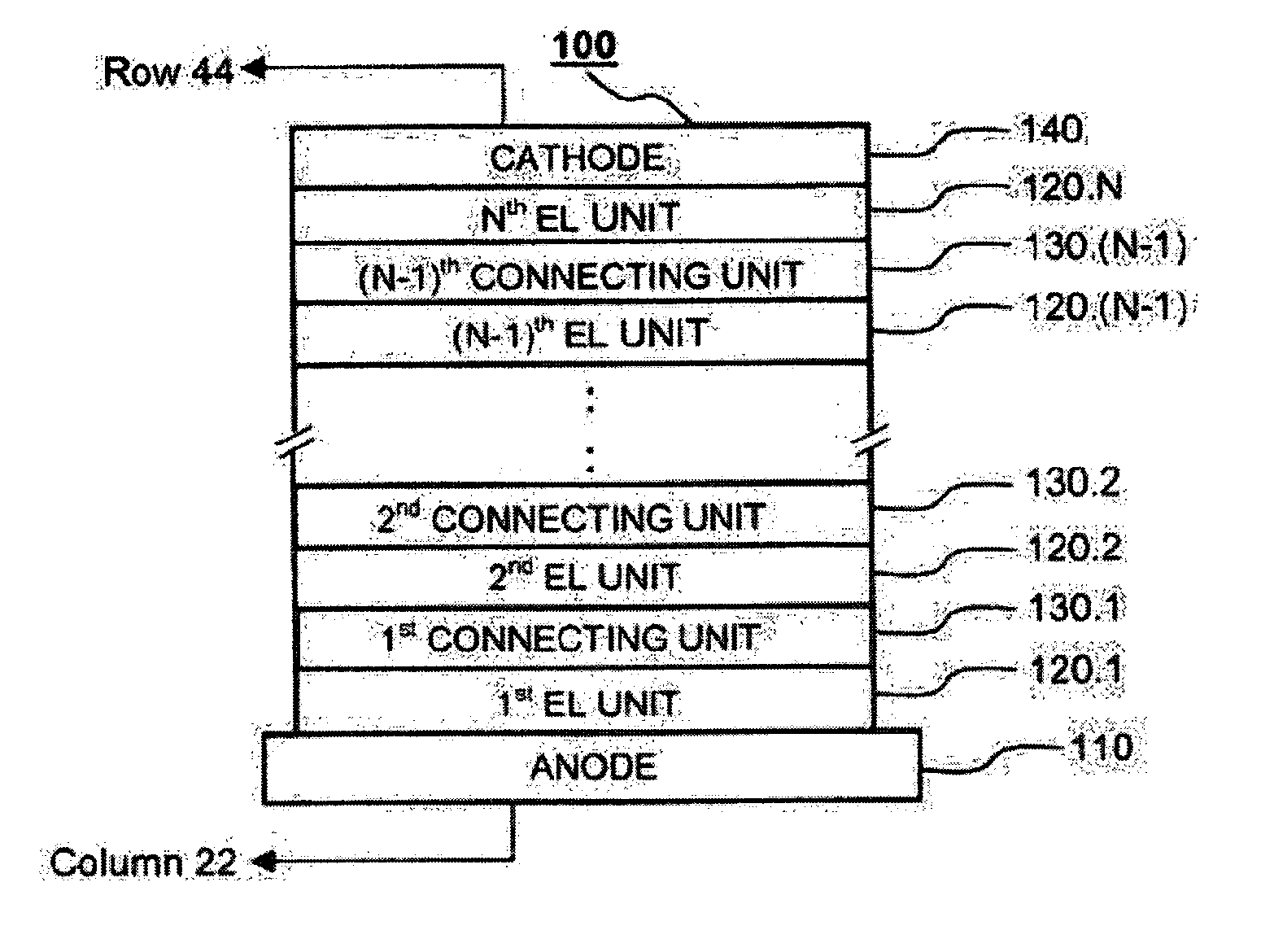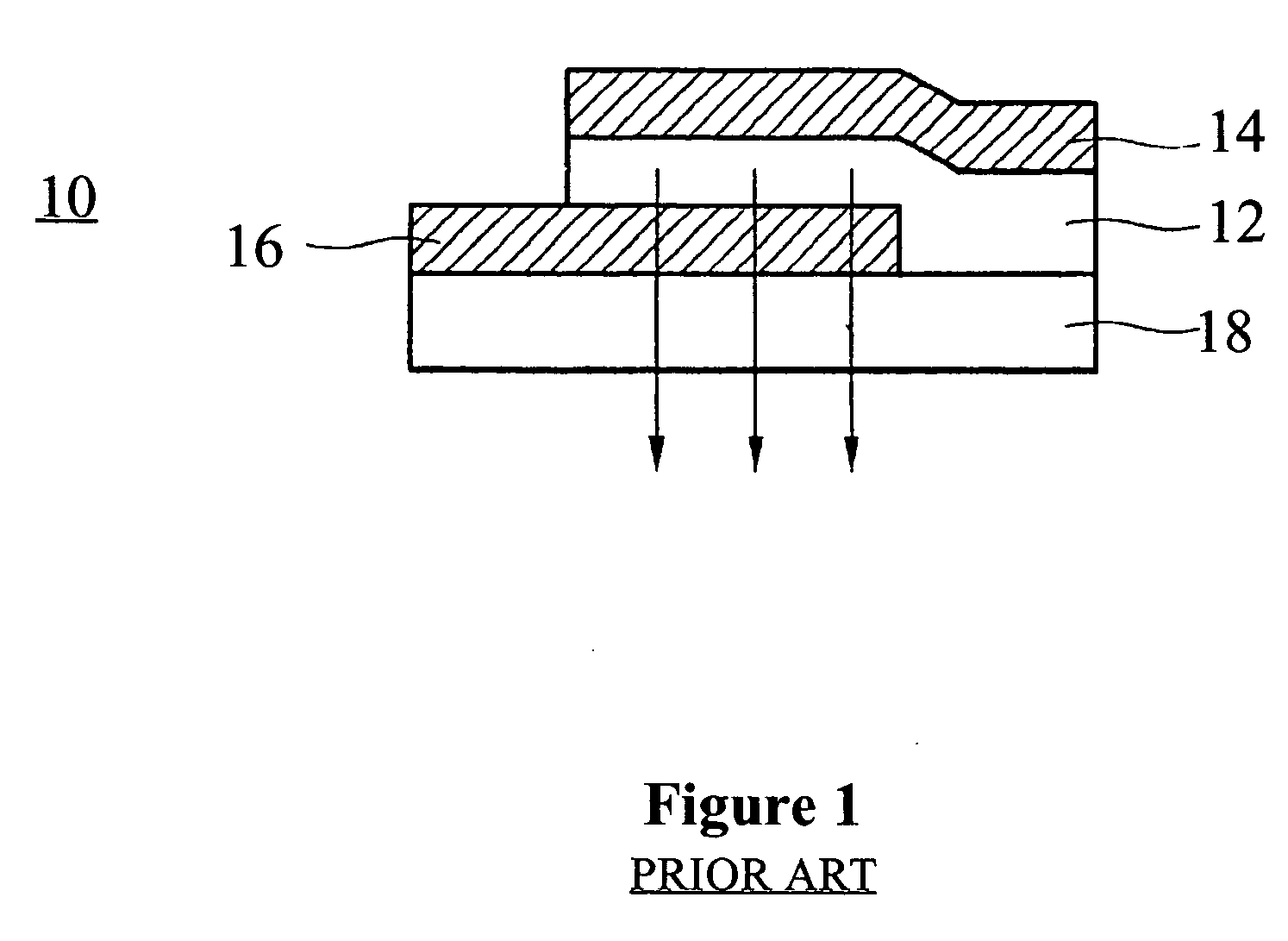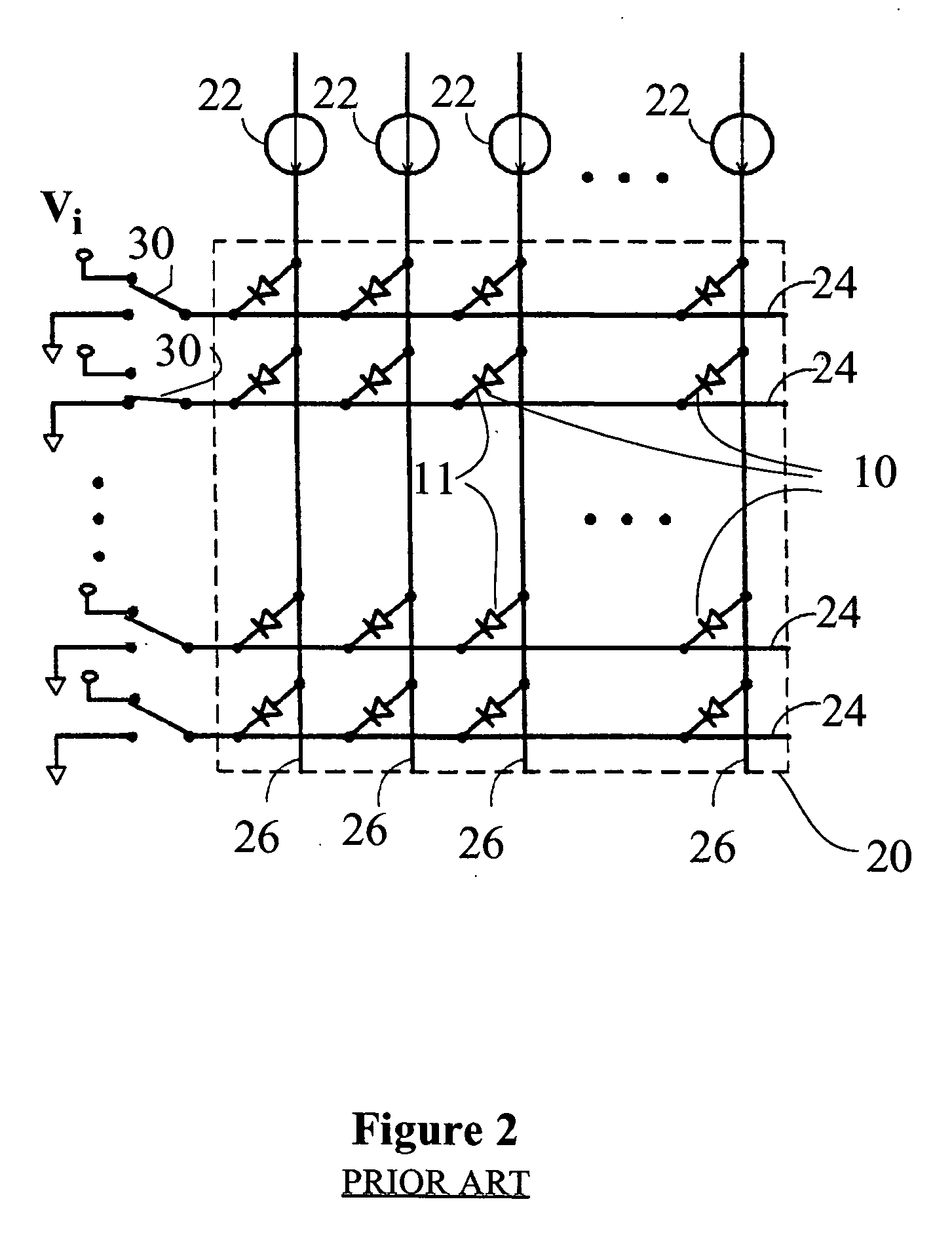Passive matrix OLED display having increased size
a matrix oled display and matrix technology, applied in the field of oled displays, can solve the problems of imposing practical constraints on the overall display size, pixel cost and complexity of these devices, and current-carrying requirements for driver support components, etc., and achieve the effect of sufficient brightness
- Summary
- Abstract
- Description
- Claims
- Application Information
AI Technical Summary
Benefits of technology
Problems solved by technology
Method used
Image
Examples
Embodiment Construction
[0043] The present description is directed in particular to elements forming part of, or cooperating more directly with, apparatus in accordance with the invention. It is to be understood that elements not specifically shown or described may take various forms well known to those skilled in the art.
[0044] For commercial viability, a high-brightness display using OLED emitters must typically provide full-frame brightness of at least a threshold level of 50 nits or better. Additionally, there must be no line dropout defects in the image region of the display, such that a complete column or row of pixels is disabled by a faulted element of the display. While current designs employing passive-matrix OLED displays are typically limited to display screens having no more than about 100 row lines and being no greater than about 6 inches diagonally, the present invention enables passive-matrix OLED displays having substantially increased size and brightness. As the background material given...
PUM
 Login to View More
Login to View More Abstract
Description
Claims
Application Information
 Login to View More
Login to View More - R&D
- Intellectual Property
- Life Sciences
- Materials
- Tech Scout
- Unparalleled Data Quality
- Higher Quality Content
- 60% Fewer Hallucinations
Browse by: Latest US Patents, China's latest patents, Technical Efficacy Thesaurus, Application Domain, Technology Topic, Popular Technical Reports.
© 2025 PatSnap. All rights reserved.Legal|Privacy policy|Modern Slavery Act Transparency Statement|Sitemap|About US| Contact US: help@patsnap.com



